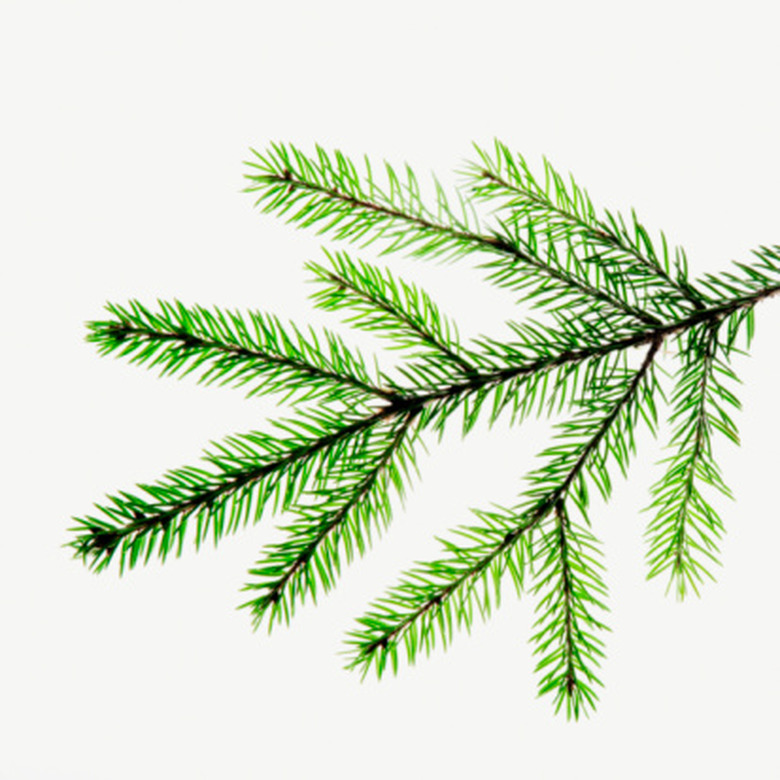Why Do Pine Trees Stay Green In Winter?
When other trees shed their leaves and grow barren during the cold winter months, pine trees and other evergreens stay lush and green, making them a potent symbol of the persistence of life. Control over water loss explains why pine trees stay green.
Function
Leaf drop protects deciduous plants from dehydration during the winter months. Water supplies underground may freeze in the winter and become unavailable to roots. At the same time, however, sunny winter days cause plants to lose water through their leaves. Eventually, the plant dehydrates and, lacking water for basic life functions, dies.
Features
Pine trees possess adaptations that help them conserve water without shedding all of their leaves at once. Needles contain fewer pores through which they lose water, and a thick, waxy coating prevents further loss. The large number of evergreen needles lets them capture a lot of sunlight with relatively little risk of water loss.
- When other trees shed their leaves and grow barren during the cold winter months, pine trees and other evergreens stay lush and green, making them a potent symbol of the persistence of life.
Benefits
Because evergreens keep their leaves, they do not need to expend energy each year to regrow a completely new set of leaves. According to the U.S. Department of Energy's Newton program, this means that evergreens can exist in areas where poor soils do not provide them with the resources for constant leaf regeneration.
Pine Trees
They raise their branches to the sky in fields, front yards and other sun-soaked places around the world. They require little water and well-drained, preferably sandy soil. They can live well over 100 years, and some have even been found that are thousands of years old, such as the bristlecone pine that thrives in Nevada's Great Basin National Park. The branches of the pine tree grow laterally from a straight trunk that's covered in bark. Some pine tree species produce just one whorl of distinct branches a year that butts against the tip of the new shoot. The woody plants that become the towering trees that populate cities, forests and national parks across the country are beneficial to the environment as well as commerce. Pine parts are also used for the manufacturing of substances such as pulp and paper, rosin and the cleaning agent turpentine.
- Because evergreens keep their leaves, they do not need to expend energy each year to regrow a completely new set of leaves.
- According to the U.S. Department of Energy's Newton program, this means that evergreens can exist in areas where poor soils do not provide them with the resources for constant leaf regeneration.
